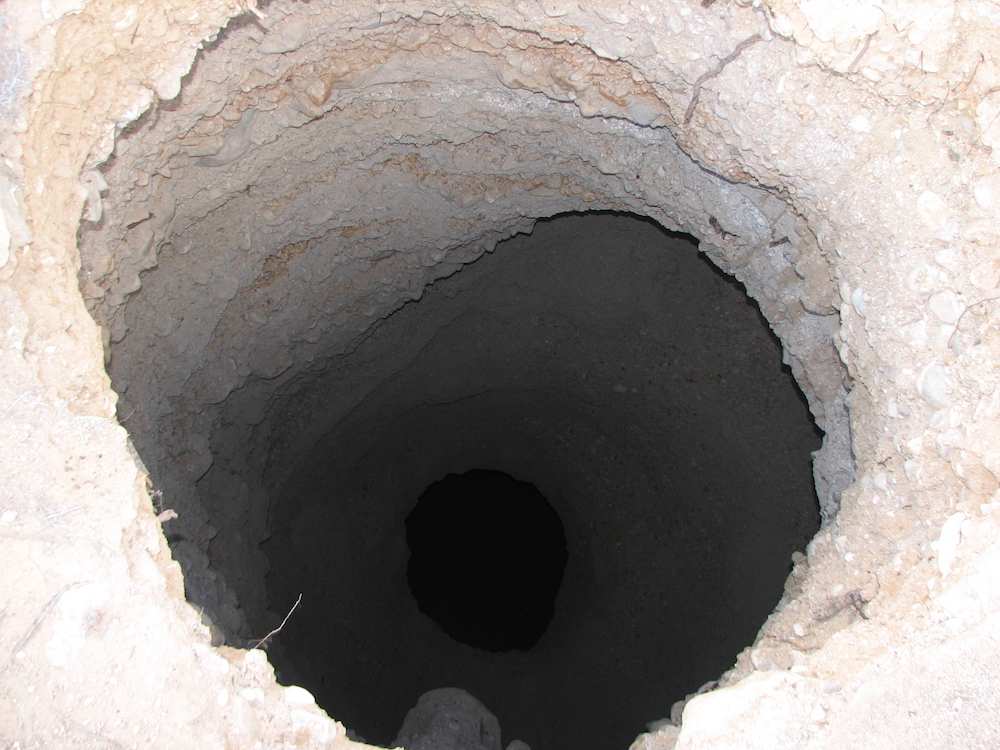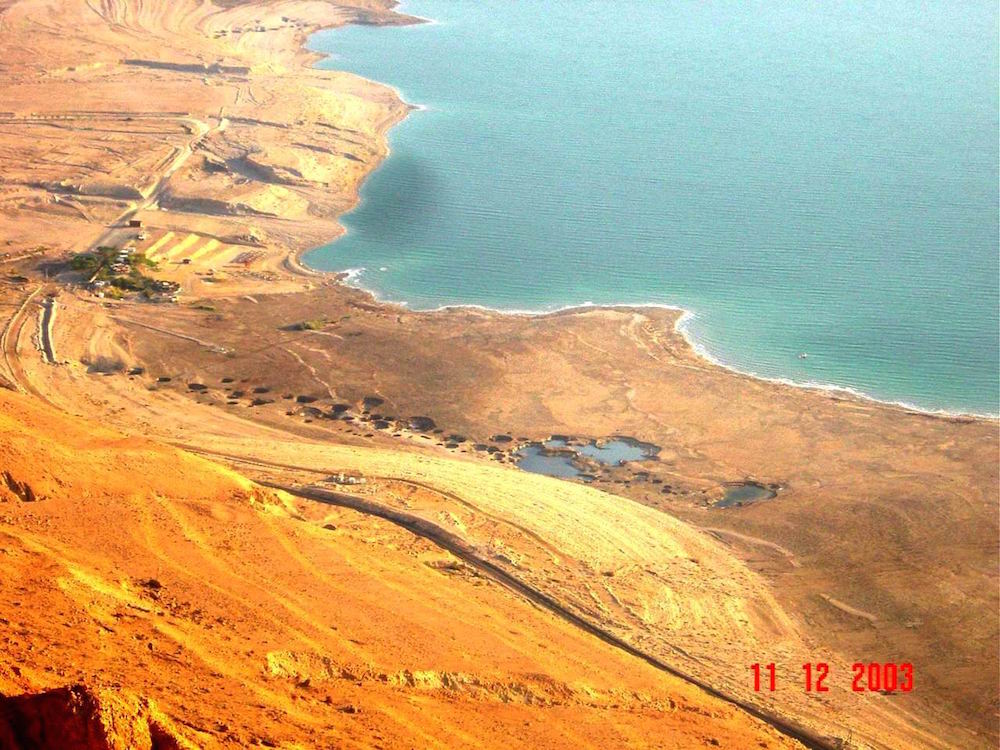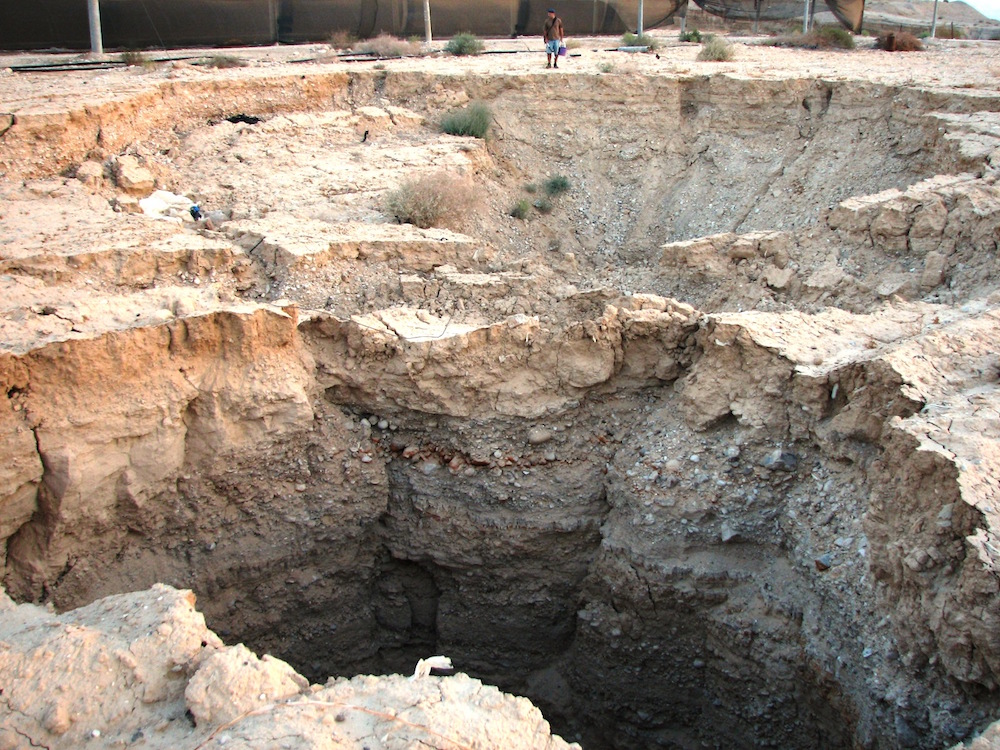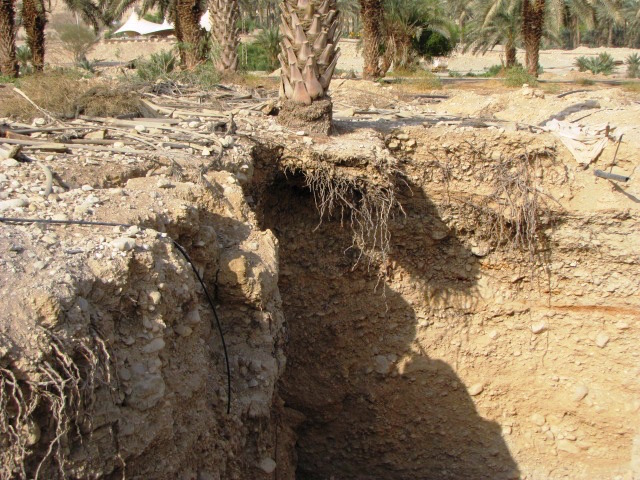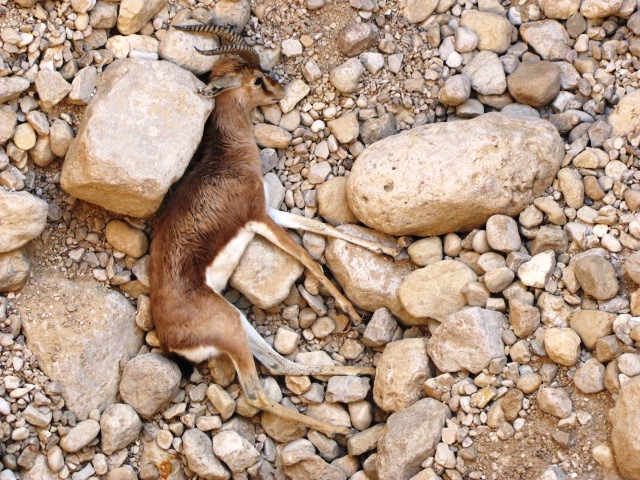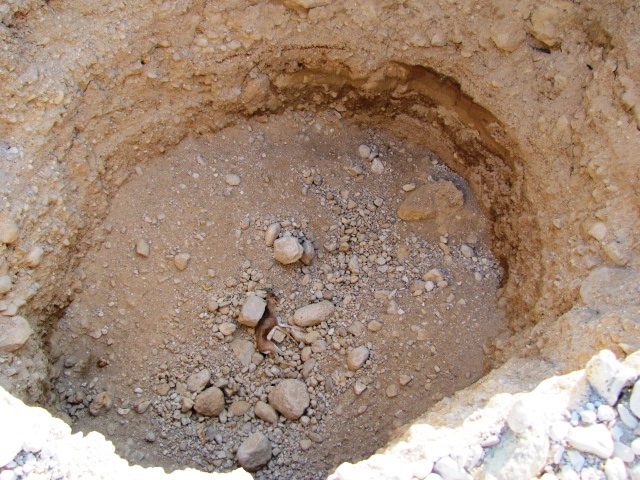Photos: Giant Sinkholes Along the Dead Sea
The Dead Sea, famous for salty water (almost 10 times as salty as the ocean), and for having the lowest elevation on Earth at 1,407 feet (429 meters) below sea level, is shrinking. And with it, giant sinkholes have been forming on its shores without warning. [Read full story about Dead Sea sinkholes]
For the past few decades, the sea has been receding by about 3 feet (1m) per year, due to the diversion of water from the Jordan River (which feeds the Dead Sea) and mineral mining from its waters in the south. As the briny water recedes, fresh groundwater wells up and dissolves layers of salt, creating large underground cavities, above which sinkholes form. (Image credit: Eli Raz)
The holes can open up without warning, and could pose a danger to visitors and residents. But predicting where and when they will form is difficult, experts say. (Image credit: Eli Raz)
Geologist Eli Raz of Israel's Dead Sea and Arava Research Center has studied the sinkhole problem in depth. Raz found that many of the craters developed along seismic fault lines in the Jordan Rift Valley. Inside these faults, the dissolved salts are less stable and more susceptible to invading freshwater, which hollows out the gaping holes, Raz's studies suggest. (Image credit: Eli Raz)
The sinkholes were first noticed in the 1970s, but have been forming more rapidly in recent years. The sinkholes can reach up to 82 feet (25 m) deep and 131 feet (40 m) in diameter, and nearby holes sometimes join to form giant ones. More than 4,000 sinkholes exist today. (Image credit: Eli Raz)
While no people have died from the Dead Sea sinkholes, some animals have been caught unawares and been injured or killed. (Image credit: Eli Raz)
However, there may be a way to stave off the Dead Sea's decline. Authorities have proposed a canal that would run from the Red Sea to the Dead Sea, called the Red Sea-Dead Sea Conduit, which, in addition to providing water to Jordan, Israel and the Palestinian territories, would bring salt water to the Dead Sea and generate electricity to supply its own energy. (Image credit: Eli Raz)
Get the world’s most fascinating discoveries delivered straight to your inbox.
Follow Tanya Lewis on Twitter. Follow us @livescience, Facebook & Google+.

